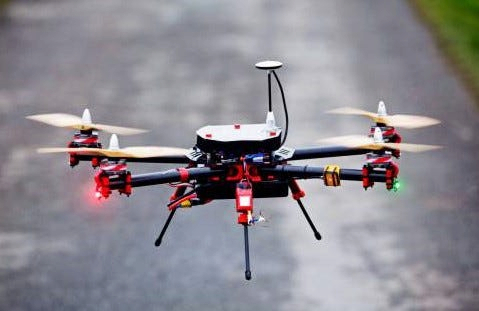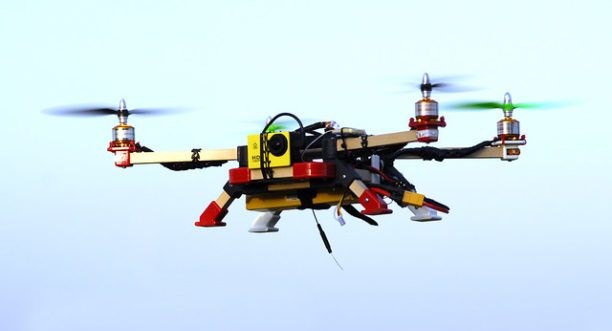Building your own drone from scratch is not only a rewarding experience but also a great way to deepen your understanding of how drones work. Whether you’re a hobbyist looking to take your skills to the next level or a professional seeking a custom solution, learning how to construct a drone can open up a world of possibilities. This comprehensive guide will walk you through the essential components, assembly process, and troubleshooting tips to help you create a functional and efficient drone.

Essential Components You Need to Build a Drone
Before you start building your drone, it’s crucial to gather all the necessary components. Each part plays a vital role in ensuring that your drone operates smoothly and efficiently.
Choosing the Right Frame and Motors
Frame Selection: The frame is the foundation of your drone. Choose a frame based on the size and type of drone you want to build. Common materials include carbon fiber, aluminum, and plastic. Carbon fiber is lightweight and durable, making it a popular choice.
Motor Selection: Motors are responsible for spinning the propellers. The type of motor you choose depends on your drone’s size and intended use. Brushless motors are the standard for most drones due to their efficiency and reliability.
Understanding Electronic Speed Controllers (ESCs)
ESC Functionality: Electronic Speed Controllers regulate the speed of the motors. Each motor requires its own ESC, which receives signals from the flight controller to adjust the motor’s speed accordingly.
Selecting ESCs: Choose ESCs that are compatible with your motors’ power requirements. Ensure that they can handle the current draw without overheating or failing.
Selecting the Right Propellers and Batteries
Propeller Types: Propellers come in various sizes and materials. Larger propellers generate more lift but require more power, while smaller propellers are more efficient for lightweight drones. Choose propellers that match your motor specifications.
Battery Selection: The battery powers your drone. Lithium Polymer (LiPo) batteries are the most common due to their high energy density and lightweight design. Ensure the battery provides enough voltage and capacity to support your drone’s motors and electronics.
Importance of the Flight Controller and GPS
Flight Controller: The flight controller is the brain of your drone, managing everything from stabilization to navigation. Choose a controller that supports the features you need, such as GPS, return-to-home, and altitude hold.
GPS Module: A GPS module allows your drone to navigate accurately and maintain its position. It’s essential for autonomous flight modes like waypoint navigation and follow-me features.
Step-by-Step Guide to Assembling Your Drone

Once you have all the components, the next step is to assemble your drone. Follow these steps to ensure a secure and functional build.
Building and Securing the Frame
Frame Assembly: Start by assembling the frame according to the manufacturer’s instructions. Ensure all parts are securely fastened, as any loose components can affect flight stability.
Securing Components: Attach the motor mounts to the frame and secure the motors. Use thread-locking compound on screws to prevent them from loosening due to vibrations.
Mounting the Motors and Propellers
Motor Installation: Install the motors onto the frame’s motor mounts, ensuring they are securely fastened. Connect the motors to the ESCs using bullet connectors or soldering them directly.
Propeller Attachment: Attach the propellers to the motors. Make sure they are mounted in the correct orientation, with two propellers rotating clockwise (CW) and two rotating counterclockwise (CCW) to ensure stable flight.
Wiring the Electronics: ESCs, Flight Controller, and Receiver
ESC Wiring: Connect each ESC to the corresponding motor and to the flight controller. Make sure the signal wires are connected correctly to the flight controller’s motor outputs.
Flight Controller Connection: Mount the flight controller in the center of the frame, ensuring it is level and secure. Connect the power distribution board (PDB) to the flight controller, ensuring all connections are correct.
Receiver Installation: Install the receiver on the frame and connect it to the flight controller. The receiver allows you to control the drone using your remote controller.
Calibrating and Testing Your Drone
Before you take your drone for its first flight, it’s crucial to calibrate the flight controller and perform thorough testing to ensure everything is functioning correctly.
Installing and Calibrating the Flight Controller
Firmware Installation: Install the appropriate firmware on your flight controller. Most controllers come with specific software that allows you to customize settings and calibrate sensors.
Sensor Calibration: Calibrate the accelerometer, gyroscope, and compass. This process ensures that your drone maintains stability and responds accurately to control inputs.
Pre-Flight Checks and Safety Measures
Battery Check: Ensure the battery is fully charged and securely mounted on the drone. Double-check all connections to prevent power loss during flight.
Propeller Tightness: Verify that all propellers are tightly secured to the motors. Loose propellers can cause imbalances and crashes.
Signal Test: Test the connection between your remote controller and the drone. Ensure that the controls respond correctly and that there is no interference.
Troubleshooting Common Issues
Even with careful assembly, you may encounter issues during your drone’s construction or initial flights. Knowing how to troubleshoot these problems can save you time and frustration.
Handling Motor and Propeller Malfunctions
Motor Issues: If a motor fails to start, check the ESC connections and ensure the motor is receiving power. If the motor is spinning in the wrong direction, swap two of the motor wires to reverse its direction.
Propeller Imbalances: If your drone wobbles or vibrates during flight, check the propellers for damage or imbalances. Replace any damaged propellers and ensure they are mounted correctly.
Dealing with Wiring and Connectivity Problems
Loose Connections: If your drone loses power or has intermittent issues, check all wiring connections for loose or broken wires. Secure any loose connections and resolder broken wires if necessary.
Signal Interference: If you experience signal loss or erratic control, ensure that your receiver is properly connected and that there are no sources of interference nearby. Rebind your remote controller to the receiver if needed.
Conclusion
Constructing a drone from scratch is a fulfilling project that combines technical skills with creativity. By carefully selecting components, following the assembly process, and calibrating your drone, you can build a reliable and efficient flying machine. Troubleshooting common issues ensures that you’re prepared to handle any challenges that arise during your drone’s operation. With your drone successfully constructed, you’re ready to take to the skies and explore new aerial perspectives.
FAQs
How much does it cost to build a drone from scratch?
The cost of building a drone can vary widely depending on the components you choose. On average, building a basic drone can cost between $200 and $500. More advanced drones with high-quality components can cost upwards of $1,000.
Can I use any frame for my drone, or does it need to be specific?
While you can technically use any frame, it’s essential to choose one that matches your drone’s size and intended use. The frame must support the motors, propellers, and other components you plan to use. Choosing the right frame ensures stability and durability.
What are the most important factors to consider when selecting a battery for my drone?
When selecting a battery, consider the voltage (measured in volts), capacity (measured in mAh), and discharge rate (measured in C-rating). These factors determine the flight time, power output, and overall performance of your drone. Ensure the battery is compatible with your drone’s components.


